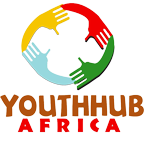The African Youth Charter is ratified! So what?
When African heads of State endorsed the African Youth Charter five years ago, their aim was to provide a guiding framework for youth development policies. This stance was proactive owing to its potential to facilitate the harmonisation of resources and policies related to youth development, rights and welfare. To achieve its aim, governments were required to ratify the charter as constitutionally appropriate in their respective countries. The processes differ between countries, but with some degree of consistence across countries.
Countries are required first to sign the charter (although this is not mandatory), then its ratification at national level through interdepartmental cooperation involving at least the departments for justice, youth development, foreign affairs and the President’s, prime Minister’s or King’s office. The content of the charter is checked for consistence with national laws through this process and is then forwarded to parliament for consideration and adoption, signed into law by the head of state and is then sent to the African Union through the country’s embassy in Addis Ababa. To date 24 countries have ratified and 38 countries signed the charter.
However, the question now that the charter is in force is, so what? This question is crucial in the face of mounting youth unemployment, high youth HIV levels, increasing levels of unintended adolescent pregnancies, crime, etc. Are government’s actually implementing the charter? What mechanisms are in place to monitor its implementation?
There are various challenges to monitoring the implementation of the charter. I highlight two of them here: the multiplicity of departments responsible for implementing the charter’s provisions and the lack of an existing framework for monitoring and data collection. The responsibility for implementing the provisions of the charter cuts across various government departments: health, education, security, juvenile justice, etc. This means that an understanding of progress in implementing the charter will require strong interdepartmental cooperation at national level to ascertain the proportion of youth between the ages of 15 and 35 benefiting from their services before collation and aggregation at regional level.
This requires the development of a set of youth development indicators, which mirror the provisions of the charter. A set of indicators will enhance effective national level monitoring and review processes. The UN Department of economic and social affairs, UNICEF America’s and Caribbean office, and the Commonwealth Youth programme are at various stages of developing youth specific indicators, African countries could build on this to develop a set of indicators. In addition, data sources like the national census, UNICEF’s multiple indicator cluster surveys, national demographic and health surveys and living standard measures could provide useful sources of data. A clue can also be taken from Nigeria’s attempt at developing a youth development index and South Africa’s National Youth reports, which present ‘data’ on the situation of youth.
Above all, what is most crucial is to implement the charter to improve the situation of youth. Implementation would require an affective coordination system for national resources related to youth. Such a framework will need to painstakingly consider all sources of ‘youth resources’ at national level, including those earmarked for traditionally ‘non-youth’ departments like defence. This is crucial amidst claims that the ‘youth sector’ is the most under-funded (a claim with which I thoroughly disagree). Another important point is to use evidence of ‘what works’ as the basis for youth policy and practice.
Unfortunately, this has not been the case, as policies have been based more on political and practical considerations and evidence is at best only used to defend current policies. The ability to adopt and adapt evidence could stem from government to government cooperation, knowledge sharing cooperation programmes, systematic literature reviews and cooperation with international institutions with capacities in areas of need.
When the youth charter entered into force in August 2009 some of us were extremely elated. Two years after and five years after it was adopted, the question for us seems to still remain now what?
____________________________
Dabesaki Mac-Ikemenjima is an avid supporter of the youth movement, having played roles in national, regional and international processes relating to the sector. He was formerly a school teacher, policy analyst and consultant at various institutions, his main interests being: HIV/AIDS, adolescent health and post conflict youth policy. His country specific experience includes: Sierra Leone, Zambia and Nigeria.







Comments are closed.
My brother thank you so much for devoting the rest of your life into a corse of youth development. Dabesaki my brother your concern on the issue of the implementation of the African Youth Charter is my worry too. Dabesaki look,now is time for us as African youth to unite and make sure that we pilot all the resolutions of African youth charter,thereafter we will ask for help from our elderly leaders,any way we are bound to lead this continent ,so let’s get the ball rolling,this is our land let us treat it as such.
Your Partner in youth development initiatives
Robert Ndlela
Youth in Action:KZN
President
In South Africa a
Great staff